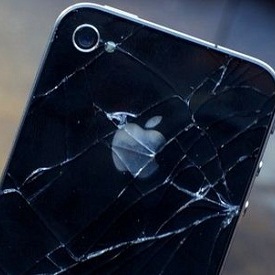
20 May 5 Ways to Protect Your Smartphone From Damage and Theft
It’s hard to walk down a city street or eat in a restaurant without seeing dozens of people engrossed in their handheld devices. Many even go so far as to call, text, and check Facebook when they’re driving or attending movies, much to the ire of their compatriots on the roads or in darkened theaters. In fact, you might start to wonder if some of your friends are incapable of being without their smartphones. What would happen if they suffered damage or loss? For that matter, what would you do without your smartphone pinging you every two minutes? When you take steps to protect your smartphone from damage and/or theft, you’ll hopefully avoid finding out. Here are some tips to keep your essential mobile technology safe.
- Carrying case. One of the easiest ways to lose or damage your smartphone is to inadvertently leave it somewhere or drop it unknowingly. And when you carry your phone in hand or in your pocket, it’s all too easy to set it down while rummaging for change and forget it, or leave it on the counter in a public restroom when washing your hands. It could even fall out of your pocket or purse or get lifted by a pickpocket. So it’s not a bad idea to use some kind of carrying case like a wrist strap, belt clip, or even a lanyard designed to ensure that your phone never leaves your possession.
- GPS tracking software. Many cell phones now prompt you to turn on built-in GPS tracking when setting up your device. By enabling this function you can track your smartphone should you accidentally leave it somewhere unattended, forget where you put it, or lose it to theft. You can also download additional tracking software that may offer extra features, such as enabling the camera (to snap a pic of the perp), making your phone ring at full volume, or turning off your device, just for example. Some will even wipe your phone’s memory, ensuring that the thief cannot gain access to sensitive data.
- Difficult password. The problem with any new technology lately is finding ways to balance convenience and security. For example, many logins are now starting to require a two-step authentication process whereby you need a password and a correct answer to a preset question in order to access sensitive data (like online bank accounts). Smartphones still feature just a password in most cases, but you want to select one that’s unlikely to be hacked, unless you want to allow a thief easy access to whatever personal data is stored on your device. It can certainly take time to input each time you use your phone, but you’ll be glad you should your device be stolen.
- Watch what you watch. Just like you have to be careful which sites you visit when using your PC or laptop, you have to take precautions when browsing the web or downloading apps or media with your smartphone. Avoiding malicious spyware and viruses is an essential part of protecting your mobile devices.
- Phone cover. Smartphones can be slippery little suckers, but they’re also rather delicate, which is why you might want to think about purchasing OtterBox iPhone 6 or Android cases designed to keep the contents safe without hindering your ability to tap, swipe, and otherwise use your smartphone. Want more tips? Visit http://merchantdroid.com/


